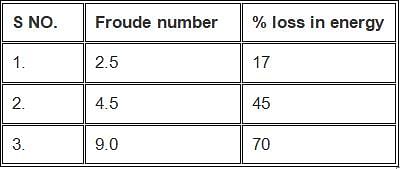Test: Energy Dissipation - Civil Engineering (CE) MCQ
10 Questions MCQ Test - Test: Energy Dissipation
When the tail-water depths in the river downstream of a spillway are quite low such that the tail-water curve at all discharges lies below the post jump depth curve, then the energy dissipation can be affected best by _________
The energy dissipation at the toe of the spillway is affected basically by the use of hydraulic jump in _________
| 1 Crore+ students have signed up on EduRev. Have you? Download the App |
The formation of hydraulic jump at the foot of a spillway is one of the common methods of energy dissipation because ________
The device which does not help in energy dissipation at the bottom of a hydraulic structure over which water spills is _______
Which of the following stilling basin help in stabilizing the flow and improve the jump performance?
A sloping apron is provided partly above the river bed and partly below the river bed in case of _______
What is the expected solution for the case when the T.W.C is lying above the J.H.C curve at all discharges?
The percentage of energy dissipation in a hydraulic jump increases with the increase in the Froude number.
When the TWC lies below the JHC at all discharges, the problem can be solved by which of the following provisions?
i. Constructing a sloping apron above the river bed
ii. Provision of roller bucket type of energy dissipator
iii. Provision of a ski-jump bucket
iv. A sloping apron below the river bed
v. Construction of a subsidiary dam
vi. A sloping apron partly above and partly below the river bed


















